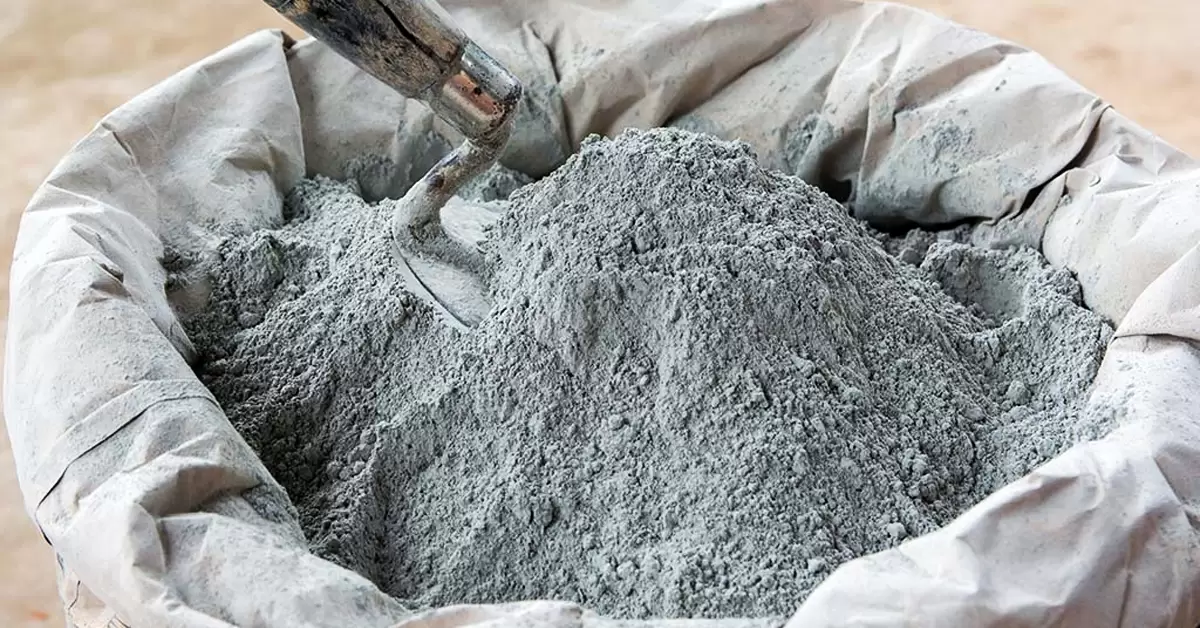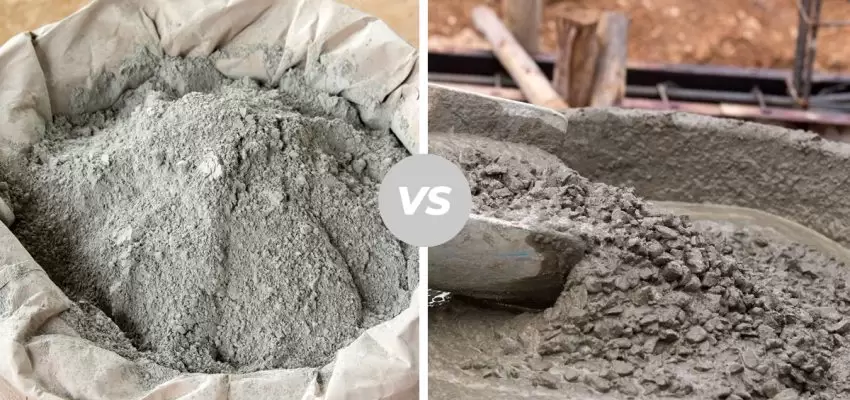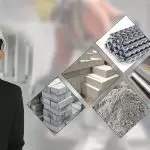More often than not, concrete and cement are treated as interchangeable terms. However, both of these components vary significantly in their composition, uses, durability, and functionality. They have great importance in the world of construction.
Post your Requirement
In this report, you will get a detailed analysis regarding the difference between these two terms, which are perceived to be the same.
What Is Cement?

Cement is a material that is the most preferred building material by many and it is a factor that binds the different parts of the construction materials to become one. Cement when mixed with water produces a solid material that binds bricks together. With the introduction of new technology, cement can be found in various forms, which are determined by the requirements that it has.
It is not something that can be used individually, but it acts as an agent that holds together several infrastructural buildings and keeps them safe and sound.
How Is Cement Made?
- Extraction Of Raw Material: There are a variety of raw materials needed for the production of cement like limestone, sand, clay, bauxite, etc. The large extracts are quarried into smaller pieces for further processing.
- Grinding, Proportioning, And Blending: After these large units are crushed into smaller ones, the next step is to convert them into a homogenous mixture by mixing different proportions of raw material depending upon the type of cement required. A few additives, like silica, iron ore, etc., are added along with the other materials to make a fine mixture.
- Pre-heating Of Raw Materials: The environment should be taken care of as an issue of concern and ensure no imbalances are seen due to our activities. At this stage, the raw materials are passed through this pre-heated chamber and turned into oxides that can be used in the kiln phase. This step is specifically performed to make the entire process of making cement more friendly to the environment.
- Kiln Phase: The mixture goes through a kiln that burns at very high temperatures, thus sintering it to form the clinker.
- Cooling And Grinding: After the formation of clinker, it is kept outside to cool down and stored safely. Also, several additives are added to the clinker to produce the final product- cement. The clinker is ground into smaller, finer particles. This fine powder is the product that we need- cement. It entails various chemical reactions that result in the binding characteristics of cement.
- Packing And Shipping: After this, the cement is to be transported to several areas where it is required. Therefore, it is packed in bulk quantities with due care and attention. Then, it is finally transferred via ships, trains, and large trucks.
Types Of Cement:
Various types of cement exist, each of which has formulations suited to particular purposes. These types include:
- Ordinary Portland Cement (OPC): This is the most widely used type and is employed in general construction.
- White Cement: Raw materials without iron and magnesium form this type, which is used for decorative purposes.
- Rapid Hardening Cement: This form is used to make rapid repairs as it sets and hardens quickly compared to OPC.
- Low-heat Cement: It produces less heat when it reacts with water. It is employed for massive concrete structures to mitigate the risk of cracking.
- Sulphate-resisting Cement: This type is not prone to sulphate attacks. It is utilized in making strong foundations or buildings that are bound to come into contact with soils or waters with high levels of that sulphate mineral.
What Is Concrete?

A mix of cement, water, and aggregates (sand, gravel, and crushed stone) makes up concrete. Several purposes benefit from its longevity and adaptability. It has been organized in a way that enables it to accommodate high pressure and for this reason, it is used in the construction of long infrastructure lines as well as fountains.
Concrete that has been made properly can withstand weathering even when there are temperature changes; it does not get easily destroyed by chemicals when they are poured on it, and there will be no rubbing off because it has been molded with massive force. It can be shaped into almost any form or size; hence, we have various architectural forms and designs made out of it.
How Is Concrete Made?
Concrete is made from the following three materials: cement, water, and aggregates.
- Cement is a binder which holds the different constituents together.
- Water causes the hydration of cement and makes it possible to work on or cure the material.
- Aggregates like crushed rocks, sand, etc. are mixed with the fine paste of cement to make the resultant mixture compatible. They are used to give volume to the entire mixture and stabilize it.
The ratios of these constituents may change according to specific construction needs. Mixing these elements is a very important procedure because using too much water will weaken the concrete and using too little water will make it hard to work with while retarding the curing process.
Cement Vs Concrete: Key Differences
-
Concrete Is Commonly Used But Not Cement:
It is to be noted that concrete is made by mixing cement with water and other aggregates; therefore, it is automatically stronger and more durable. Buildings that contain cement as their main binding constituent can easily collapse and cause huge destruction. On the other hand, concrete buildings are robust and would not collapse easily. When we look at tall buildings, they are made using concrete, whereas, for small projects and tasks, cement is widely used.
-
Application:
Cement is primarily used to assist in the manufacturing of concrete. Additionally, it can be used for minor repairs or decoration. When it comes to smaller jobs, cement is the preferred material to be used in the process.
Concrete has widespread application in construction projects such as housing units like houses or apartments; road networks covering all roads within urban centres around countries’ territories; and rails provided by rail lines running throughout nation-states, including both passenger transport services and industrial transit systems. Due to its long-lasting properties, it is more often used in large-scale projects.
-
Functionality:
Although used in other areas, the primary role of cement is to bind building materials together. This means that when cement is combined with water and other materials like sand, gravel, or crushed stones, it changes chemically, resulting in hydration that forms a solidified mass. Therefore, cement can stick on different surfaces and unite diverse components, such as rocks on walls (mortar) or pebbles underneath pathways (concrete). Consequently, the setting time allows this agent to combine with aggregates and sand, producing concrete structures or bricks, after which it becomes harder than before.
In contrast, cement contains aggregates, water, and additives and finally becomes concrete suitable for different purposes such as foundations, roads, buildings, infrastructure projects, etc. It is specifically known for its flexibility and durability, which is why it is mostly used in various applications, starting from constructing houses to making roads or highways.
-
Sustainability And Innovation:
Cement production is one of the biggest sources of carbon dioxide production due to its energy-demanding nature. Energy-efficient methods of developing cement to promote sustainability typically involve switching to cleaner fuels, like biomass, or adding other minerals, e.g., ashes or slag. As well as this, some new technologies help reduce CO2 emissions from cement industry sites directly by burying them in the ground.
In the case of concrete, specific technology is behind increased sustainability through the production of high-performance recycled aggregates and reclaimed water-based concrete mixes to minimize ecological harm. Similarly, innovation gives rise to “self-healing” concrete that fixes cracks on its own, as well as previous concrete for better stormwater management. Thus, not only do they enhance concrete’s efficiency, but sustainable construction techniques can also be observed.
-
Maintenance Requirements:
The maintenance requirements for both materials vary significantly.
The cement does not require much upkeep and maintenance after its application. Cement is primarily used in small projects as a final product. Otherwise, it is used in the production of concrete, which is further used in the construction of buildings. Therefore, it does not require much care and maintenance.
In the case of concrete, it is formed by the composition of cement, water, and other additives. Concrete is used in the construction of roads, buildings, and bridges, which requires regular inspections. Concrete-made infrastructure requires regular repairs and maintenance to increase its overall life span and ensure its structural integrity.
-
Sustainability And Innovation:
The economic perspectives of cement and concrete are very different.
The availability of raw materials, energy costs, and technological investment in manufacturing processes determine its total cost. Its price volatility varies independently with general construction project expenses. Concrete pricing varies with the availability of aggregates, transport distances, and mix and placement process complexities. Other ingredients that impact the cost of concrete are admixtures and reinforcement. Therefore, the two materials take centre stage in the economics of construction, as cement is used as a benchmark that provides the floor price for the production of concrete. That comprehension of such dynamics helps stakeholders with budgetary concerns optimize materials used to yield cost-effective and sustainable construction projects.
Conclusion
Cement is linked to concrete because both are used in construction, although their applications may be different. Simply put, Cement serves as one of the components of the mixture. That is, a certain amount of binding agent that can best bring materials together by its ability to set and harden that it adheres to another building material. Conversely, concrete is a composite material that consists of water and aggregates mixed in proportions with cement (together with other materials) to form a hard mass called a mixture. Although there is some correlation between the two concepts, it would be important to distinctly explain what each means before expounding further. Experts or people in the field of construction and engineering should take note of this variance to ensure appropriate usage.
Read Also: Top 10 Best Cement Companies In India
FAQ’S
Q:1 Can cement be used on its own?
A:1 The mixture of cement alone should not be used, as it alone cannot be used for construction. Instead, it is mixed with water and aggregates to make concrete that is necessary in terms of strength and durability for construction.
Q:2 How does the setting time of cement affect construction?
A:2 The rate at which cement sets determines how fast building construction can take place. There are two important aspects to be considered which are the initial setting time, which takes into account when the cement starts to harden, and the final setting time, which refers to the time duration taken by the concrete before it is fully hardened. Faster setting times might indeed accelerate building processes, provided they are well regulated so that finalization and strength gain are achieved appropriately.
Q:3 What advancements are being made in concrete technology?
A:3 Concrete technology innovations include the use of self-healing concrete, in which bacteria or capsules repair the cracks; ultra-high performance concrete, known as UHPC, that has better strength and durability; 3D printed concrete for quick intricate designs during construction; and green concrete, which is created using ecological substances and methods to minimize its production of carbon dioxide alongside the environment.
Q:4 What are some common problems with concrete?
A:4 Some examples of common issues associated with concrete are: cracking as a result of either shrinkage, temperature fluctuations, or applied loads; scaling, which refers to surface chipping caused by freeze-thaw cycles; efflorescence, meaning a white powdery or frothy deposit at the surface caused by the movement of water within concrete; spalling chips off or breaking down the surface of concrete; and corrosion induced often on reinforcement.























Post A Comment